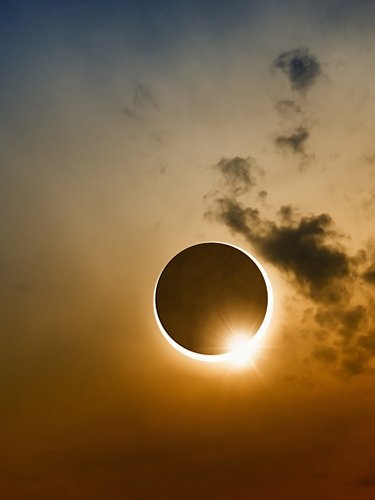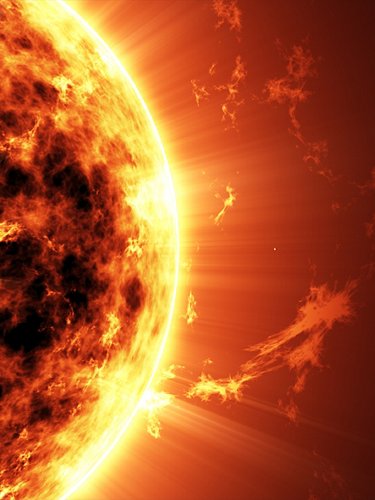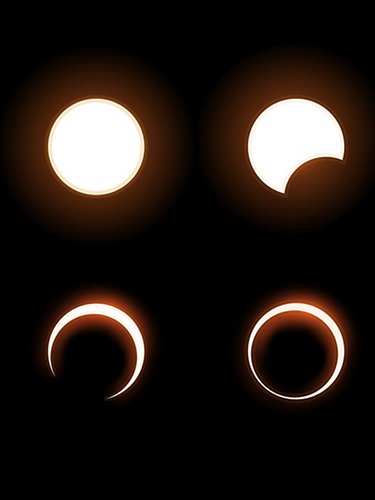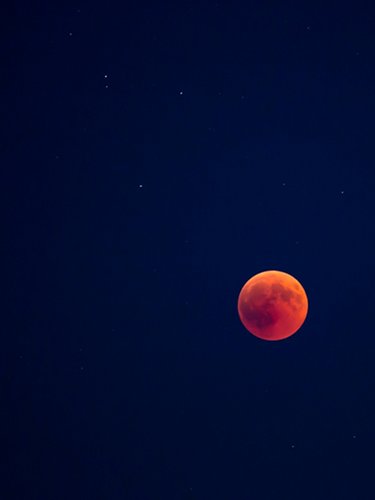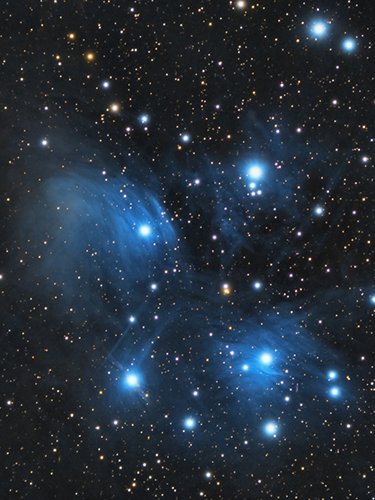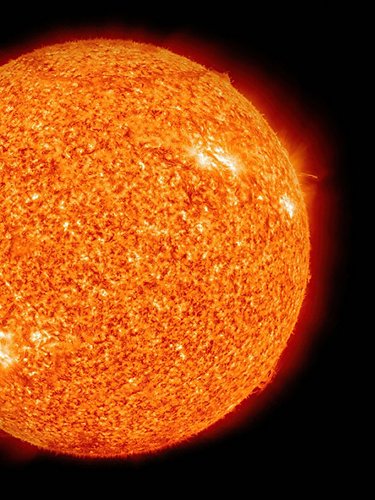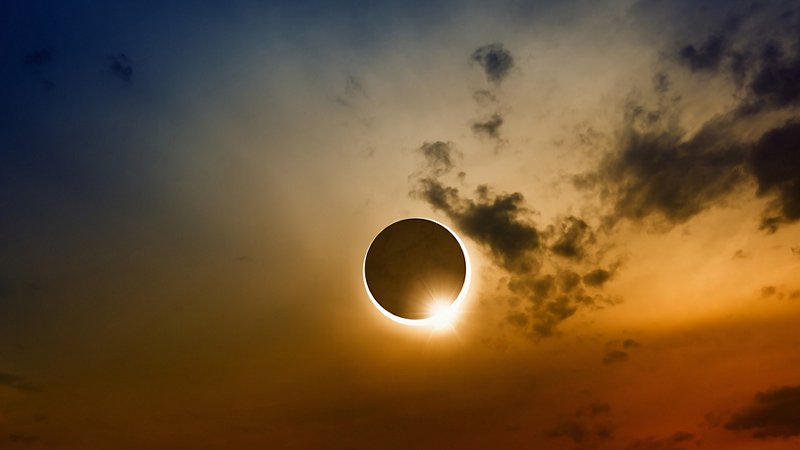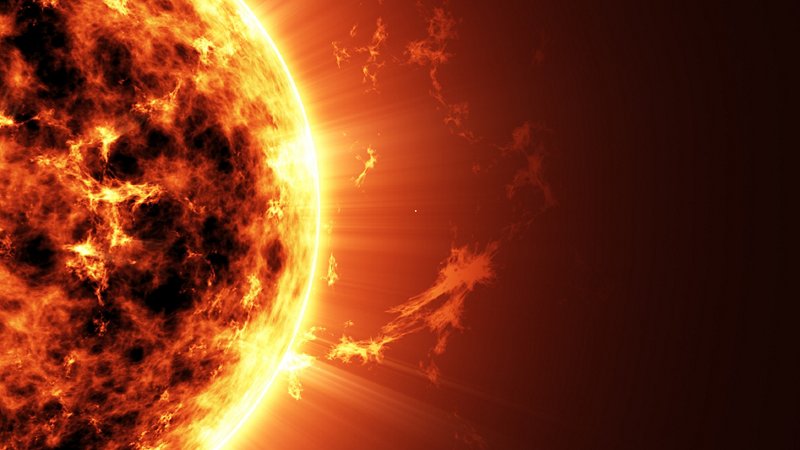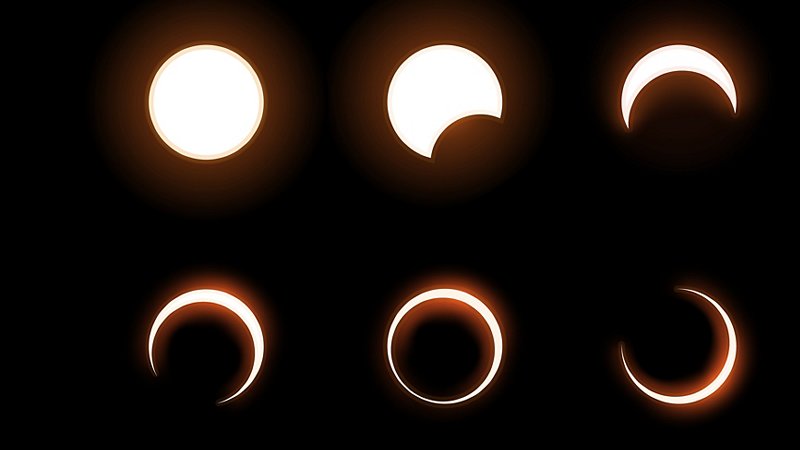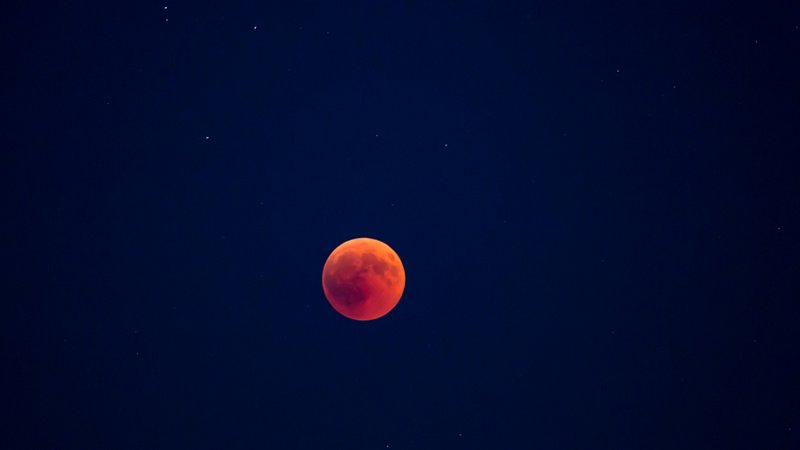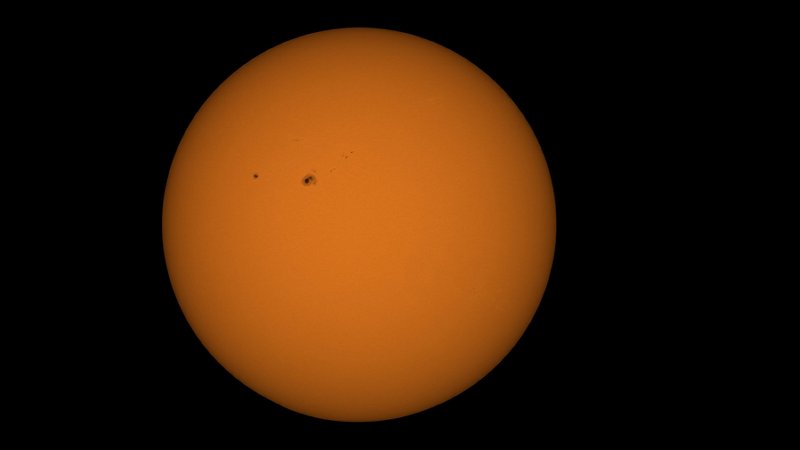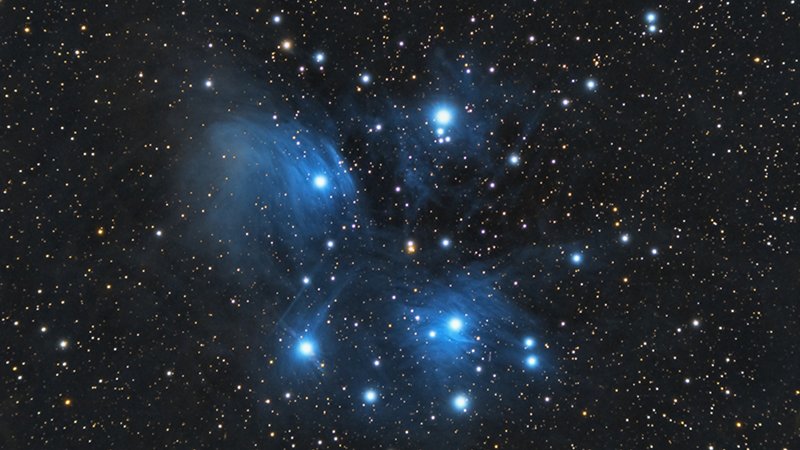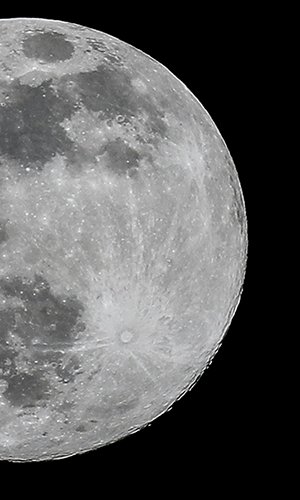The Sun is so big that over 100 planets as big as Earth could be placed along its diameter. The Sun is a gigantic sphere of gas and its mass alone constitutes 99% of the total mass of the Solar System.
We can think of the Sun as an enormous onion made of concentric layers of gas: what we see from Earth is the outline of the outer shell called the photosphere. The phenomena that take place in this region can be viewed even with small instruments as long as they have adequate filters: in fact, one must remember never to stare directly at the Sun because its light is so intense that it would cause permanent eye damage. On observing the photosphere, one notices that it is not compact, but made up of many small cells. This structure, called granulation, is caused by convective motion: columns of hot gas coming from the centre of the Sun reach the surface and then sink towards the interior. Also in the photosphere, groups of sunspots can be observed. These areas appear darker than the surrounding area because within them the gas is cooler than average. Even though they look small on the Sun’s surface, these structures are so big that they could contain five planets the size of the Earth. In contrast, faculae are areas that appear brighter because they are warmer than the surrounding gas. Above the photosphere lies the stellar atmosphere made up of two distinct areas known as the chromosphere and the corona, in which the gas is more rarefied. Even in these regions some phenomena can be observed, such as protuberances, gigantic columns of gas that rise almost perpendicularly to the Sun’s surface and which form beautiful arch-shaped structures.

